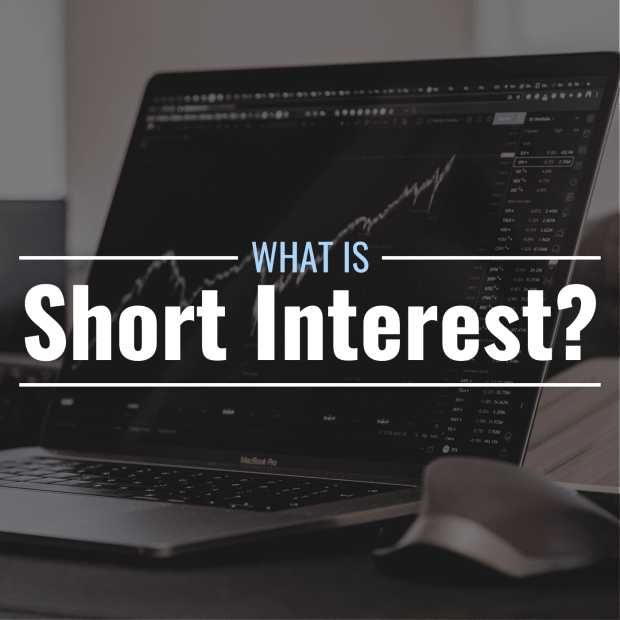What Is Short Interest? Definition & Importance in Trading
The motto of the stock market may be “buy low, sell high,” but there are also ways to profit from stocks falling in value. One way to do this is to short a stock—this means borrowing shares, selling them immediately at their current market price, then repurchasing them at a later date—ideally at a ...


The motto of the stock market may be “buy low, sell high,” but there are also ways to profit from stocks falling in value. One way to do this is to short a stock—this means borrowing shares, selling them immediately at their current market price, then repurchasing them at a later date—ideally at a lower market price—before returning them to the lender, pocketing the difference.
What Is Short Interest & Why Does It Matter?
Put simply, short interest refers to the percentage of a company’s floating shares that are currently sold short. Since investors sell a stock short if they expect it to decline in value, short interest is a bearish indicator. The higher a stock’s short interest, the less optimistic the market is about its near-future performance. Low short interest, on the other hand, indicates that few investors are currently betting against a stock’s success.
Short interest is an important signal for traders and shorter-term investors to pay attention to, as it indicates whether the market at large is currently bullish or bearish toward a particular stock, and to what degree.
Contrarian traders are particularly interested in short interest, as the more short interest a stock has, the higher its price could potentially rise in the event of a short squeeze (a meteoric rise in a stock’s price caused by short sellers rapidly repurchasing shares at higher prices to cover their unsuccessful short positions and avoid further losses).
Does Short Interest Include Covered Short Sales?
If a short seller’s prediction turns out to be wrong, and the stock they bet against begins to rise in price instead of declining, they still have to return the shares they borrowed to their lender. This means buying them back at market price, even if it is higher than what they sold their borrowed shares for. When a short seller purchases shares to return to their lender, they are “covering” their short position.
Covered short positions are not included in short interest, as covered short positions are essentially concluded trades. Short interest only includes shares that are currently sold short and have not been repurchased. MarketWatch maintains a list of the stocks with the highest short interest at any given time.
What Percentage Short Interest Is Considered High?
Short interest can vary quite a bit between industries, but in general, between 10% and 20% is considered relatively high, and anything above 20% is considered very high. Anything under 10% is considered normal. Short interest below 2% indicates that the market is broadly optimistic about a stock’s near-term prospects.
Where Can You Find a Stock’s Short Interest?
Most stock quote websites list short interest (or at least the number of shares currently sold short, which can be divided by floating shares to determine short interest) along with other popular statistics like market cap and P/E ratio for each stock. If short interest can’t be found on a particular stock quote service, it may be available on the website of the exchange where that stock is listed (e.g., the NYSE or Nasdaq).
What Is a Short Interest Ratio (AKA Days to Cover)?
A stock’s short interest ratio (sometimes referred to as days to cover) is the number of shares currently sold short divided by the stock’s average daily trading volume. This is an estimation of how many days it would take for all current short sellers to cover their positions, assuming trading volume remains close to average.
In the event of a short squeeze, the rising price of a stock pressures short sellers to cover their positions for fear of additional losses should prices continue to rise. Short sellers can only cover their positions if shares are available for sale, and if there are more buyers than sellers for the stock in question, it can take time for sellers to find enough available shares to cover their positions.
Does Most Short Interest Come From Hedge Funds?
Short selling is a somewhat advanced trading strategy, so it is most commonly used by hedge funds and other large, institutional investors. That being said, individual investors can also short stocks, and many investors create short positions on stocks they own and are bullish toward as a hedging technique to reduce their potential losses should the stock in question lose value.
Can Short Interest Exceed 100%?
Short interest can occasionally exceed 100%. For instance, if an investor owns shares of stock XYZ, their broker can lend those shares to short sellers. These sellers then resell the shares, which could be purchased by another investor, whose brokerage could, once again, lend them out to short sellers.
This creates a situation wherein the same shares can be sold short multiple times, resulting in short interest exceeding 100%. This famously occurred prior to the notorious Gamestop short squeeze in 2021.
What's Your Reaction?



























































